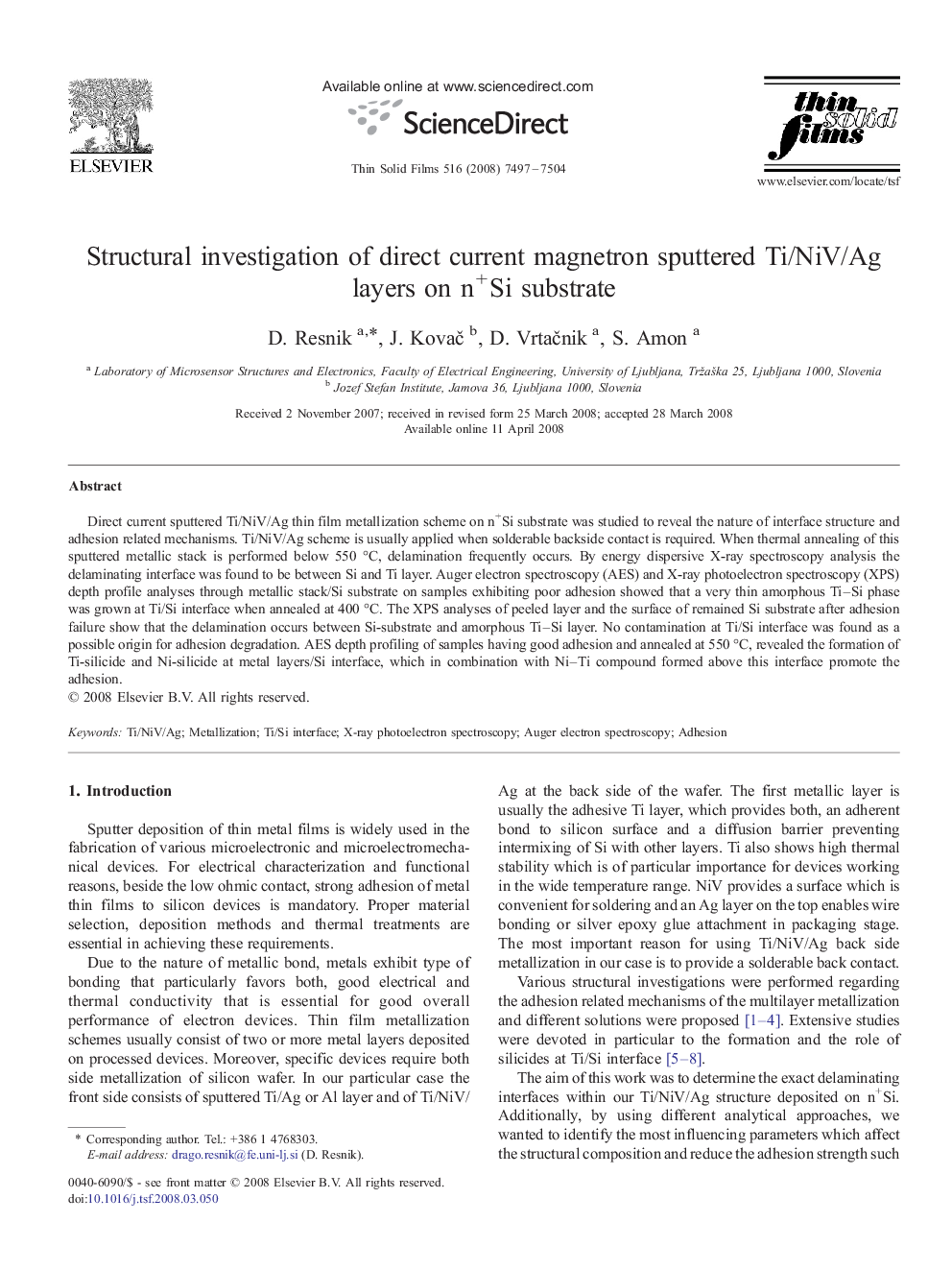| Article ID | Journal | Published Year | Pages | File Type |
|---|---|---|---|---|
| 1673907 | Thin Solid Films | 2008 | 8 Pages |
Abstract
Direct current sputtered Ti/NiV/Ag thin film metallization scheme on n+Si substrate was studied to reveal the nature of interface structure and adhesion related mechanisms. Ti/NiV/Ag scheme is usually applied when solderable backside contact is required. When thermal annealing of this sputtered metallic stack is performed below 550 °C, delamination frequently occurs. By energy dispersive X-ray spectroscopy analysis the delaminating interface was found to be between Si and Ti layer. Auger electron spectroscopy (AES) and X-ray photoelectron spectroscopy (XPS) depth profile analyses through metallic stack/Si substrate on samples exhibiting poor adhesion showed that a very thin amorphous Ti-Si phase was grown at Ti/Si interface when annealed at 400 °C. The XPS analyses of peeled layer and the surface of remained Si substrate after adhesion failure show that the delamination occurs between Si-substrate and amorphous Ti-Si layer. No contamination at Ti/Si interface was found as a possible origin for adhesion degradation. AES depth profiling of samples having good adhesion and annealed at 550 °C, revealed the formation of Ti-silicide and Ni-silicide at metal layers/Si interface, which in combination with Ni-Ti compound formed above this interface promote the adhesion.
Related Topics
Physical Sciences and Engineering
Materials Science
Nanotechnology
Authors
D. Resnik, J. KovaÄ, D. VrtaÄnik, S. Amon,
